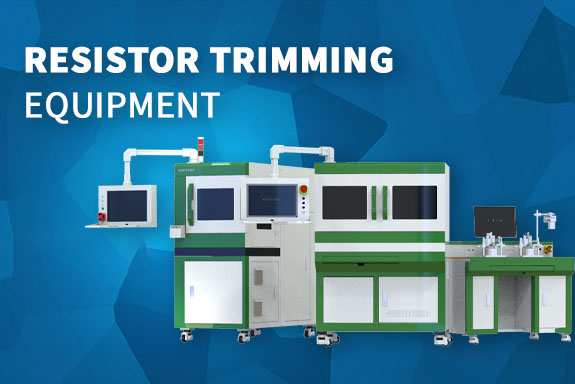Laser cleaning technology is increasingly being adopted across industries for its precision and efficiency in removing rust, oil, paint, and other contaminants from surfaces. This guide will explore how laser cleaning works, its advantages, and its diverse applications, with a focus on laser rust removal, oil removal, and paint removal.
What is Laser Cleaning?
Laser cleaning is a non-contact, eco-friendly process that uses high-energy laser beams to remove contaminants from the surface of materials. This technique is widely used for rust removal, oil cleaning, and paint stripping, ensuring thorough cleaning without damaging the substrate. Laser cleaning is an efficient alternative to traditional methods like sandblasting, chemical solvents, and abrasive techniques.
Advantages of Laser Cleaning
Laser cleaning offers several benefits, including precision, speed, and environmental friendliness. By utilizing laser beams to target specific areas, it minimizes damage to the underlying surface. Additionally, the process doesn’t require harmful chemicals, making it an eco-conscious choice.

Laser Rust Removal
Laser rust removal is one of the most popular applications of laser cleaning technology. Rust can severely damage metal surfaces over time, leading to corrosion and weakening of the structure. Traditional methods like sandblasting or using harsh chemicals can often cause surface damage. However, laser rust removal provides a highly precise method that preserves the integrity of the metal.
How Laser Rust Removal Works
The laser beam is focused on the rusted area, heating it rapidly. This creates a thermal expansion that effectively disintegrates the rust, leaving the underlying metal clean and untouched. Because laser rust removal is non-abrasive, it can be used on delicate surfaces or materials that cannot withstand traditional methods.
Applications of Laser Rust Removal
Industries such as automotive, aerospace, and heavy machinery widely utilize laser rust removal to maintain and refurbish metal components. The process is also ideal for cleaning rust from small precision parts, tools, and larger structures like bridges and pipelines.
Laser Oil Removal
Laser cleaning can also be used to remove oil and grease from surfaces, a critical process in industries like automotive manufacturing and aerospace engineering. Oil residue can interfere with coatings, adhesives, or paints applied to metal surfaces, reducing adhesion quality. Laser oil removal ensures that the surface is free of contaminants without the use of harsh solvents.
How Laser Oil Removal Works
The laser heats the oil on the surface, causing it to evaporate instantly. As with rust removal, the laser beam does not affect the substrate material. Laser oil removal can be used on various surfaces, including metal, plastic, and composite materials, making it a versatile cleaning solution.
Advantages of Laser Oil Removal
Using lasers for oil removal ensures precision and cleanliness, reducing the need for post-cleaning processes. Since the process is dry, it eliminates the need for drying steps often required in chemical cleaning.
Laser Paint Removal
Laser paint removal, or laser paint stripping, is another application where lasers excel. This method is particularly beneficial for industries where precision is essential, such as aerospace, where paint must be stripped from surfaces without affecting the underlying material. Laser paint removal is a popular choice because it eliminates the need for abrasive blasting or chemical solvents.
How Laser Paint Removal Works
Lasers are used to vaporize the paint from the surface, leaving the material underneath intact. Unlike mechanical methods, laser paint removal does not create excessive heat or stress on the material, making it ideal for sensitive surfaces. The process can be applied to metals, plastics, ceramics, and composites.
Laser Paint Removal in Industry
In the automotive industry, laser paint removal is used to remove coatings and paint from car components during maintenance or restoration. Similarly, the aerospace industry uses laser paint stripping to ensure that components meet strict cleanliness and safety standards without compromising the structural integrity of the material.
Types of Laser Cleaning Machines
Laser cleaning machines come in various forms, depending on the application and required precision. These machines range from portable handheld devices to larger industrial-grade systems used for cleaning large surfaces. Laser rust removal machines, oil cleaning lasers, and paint stripping lasers are available in different power ranges, enabling users to select the appropriate device for their needs.
Handheld Laser Cleaners
Handheld laser cleaners are portable devices designed for smaller-scale cleaning tasks. They are ideal for spot cleaning or for use in locations where larger machines may not fit. These handheld systems are commonly used for laser rust removal, oil cleaning, and paint stripping in small areas or intricate parts.
Industrial Laser Cleaning Machines
For large-scale cleaning tasks, industrial laser cleaning systems are used. These machines offer higher power and precision, making them suitable for industries like shipbuilding, aerospace, and manufacturing. Laser rust removal machines and laser paint removal machines can be customized to suit specific industrial applications.
Environmental Impact of Laser Cleaning
One of the most significant benefits of laser cleaning is its positive environmental impact. Traditional methods for removing rust, oil, or paint often rely on hazardous chemicals or abrasive materials, which can create waste and pollution. In contrast, laser cleaning is a clean, eco-friendly process that produces minimal waste and requires no harmful chemicals. This makes it a sustainable choice for industries looking to reduce their environmental footprint.
Cost-Efficiency of Laser Cleaning
Although the initial investment in laser cleaning machines can be higher than traditional methods, the long-term benefits are substantial. Reduced material waste, minimal damage to surfaces, and elimination of chemical usage make laser cleaning a cost-effective solution over time.
Conclusion
Laser cleaning is a versatile, environmentally friendly, and highly effective method for removing rust, oil, and paint from surfaces. Whether you’re dealing with delicate components or large industrial surfaces, laser rust removal, oil cleaning, and paint stripping offer precision and efficiency unmatched by traditional methods. As industries continue to prioritize sustainability and precision, laser cleaning will likely remain a preferred choice for many applications.
由用户投稿整理稿件发布,不代表本站观点及观点,进行交流学习之用,如涉及版权等问题,请随时联系我们(yangmei@bjjcz.com),我们将在第一时间给予处理。






